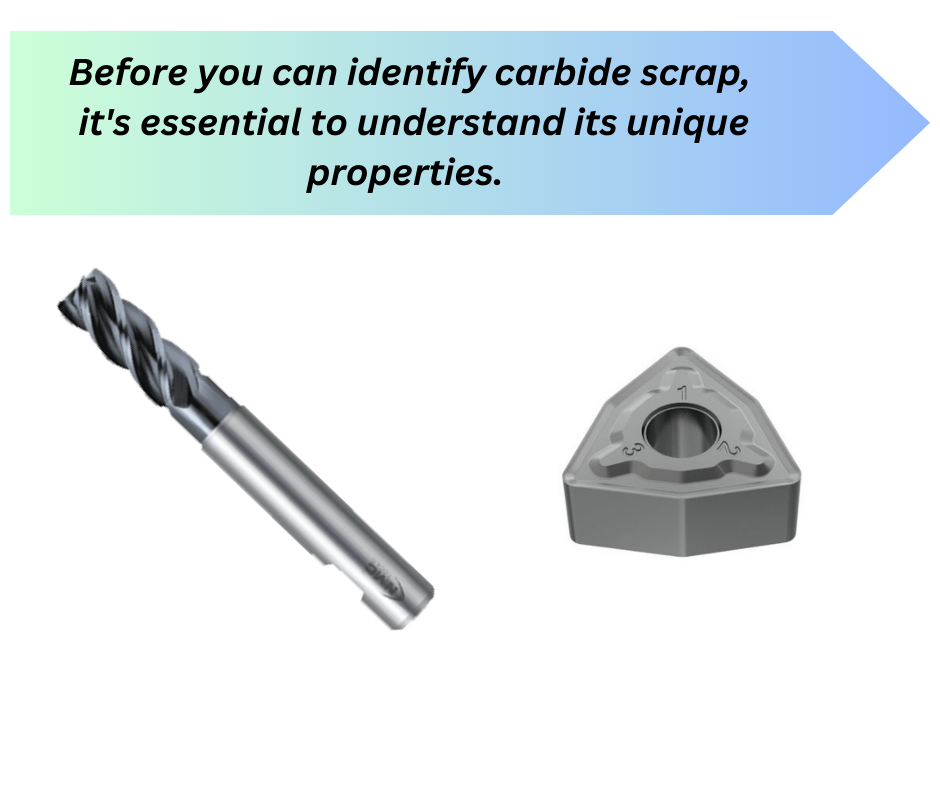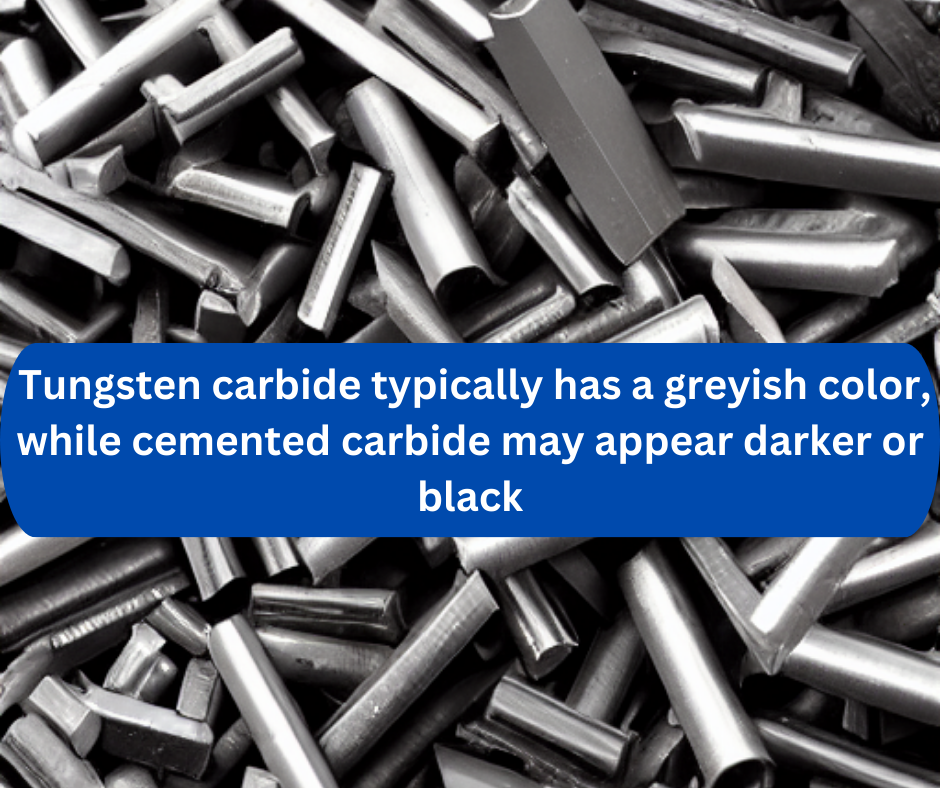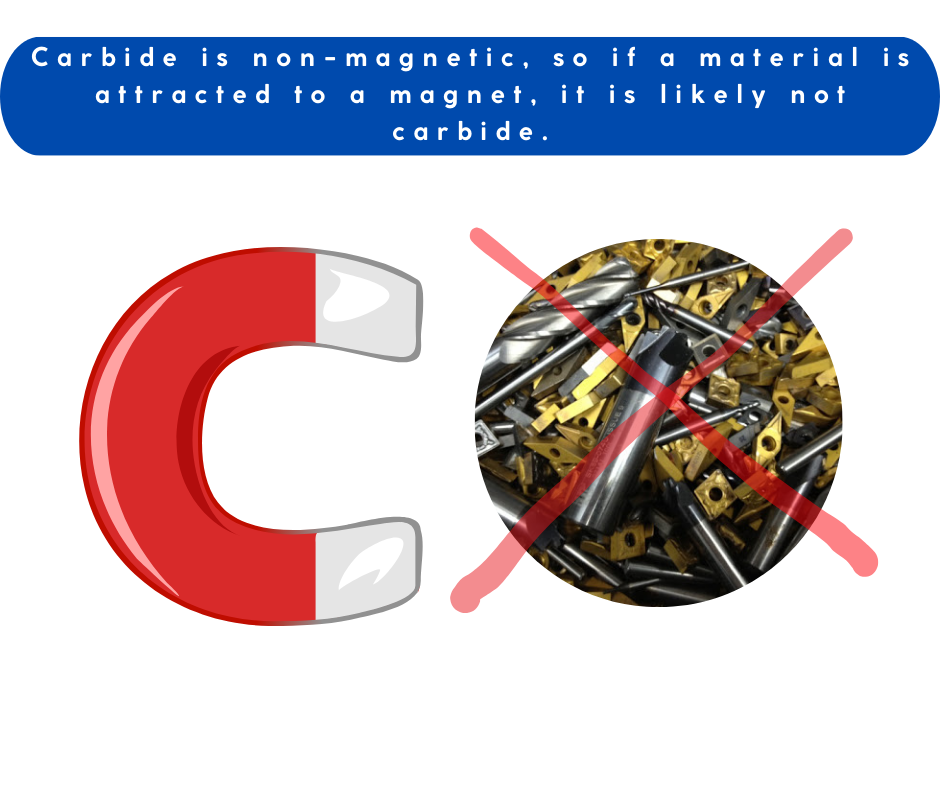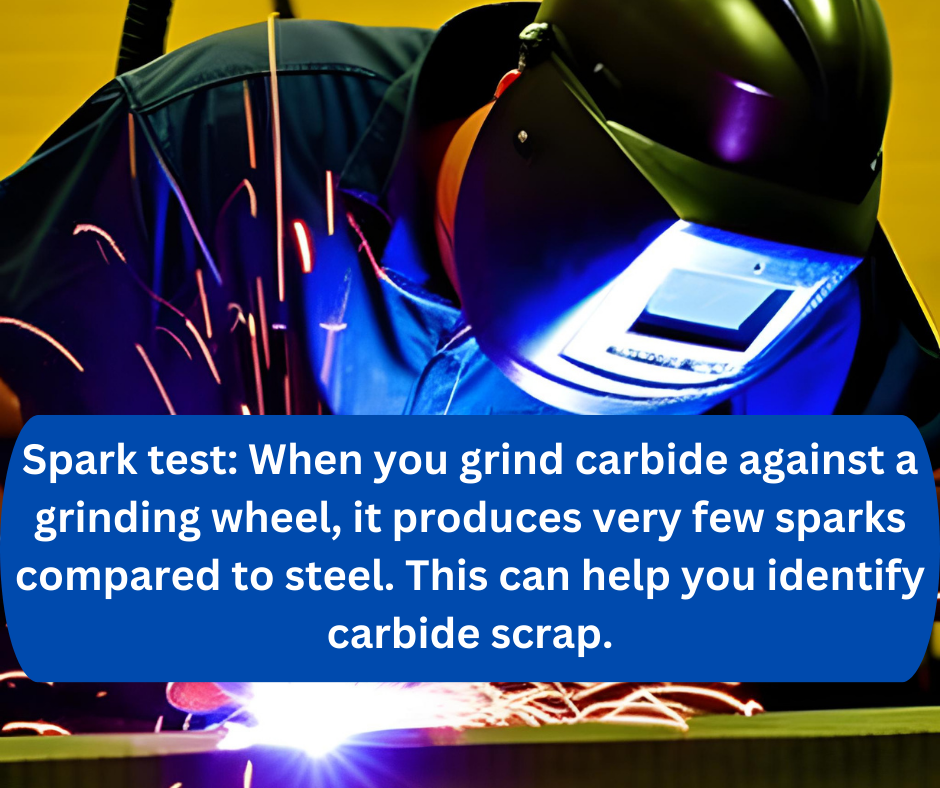Identify Carbide Scrap in 5 Steps
Let's Identify Carbide Scrap in 5 Steps: A Comprehensive Guide
Introduction
Are you a carbide scrap buyer looking to identify carbide scrap with ease? Look no further!
In this comprehensive guide, we will walk you through five simple steps to help you identify carbide scrap like a pro.
Carbide is renowned for its high density, exceptional strength, and resistance to wear and heat.
By familiarizing yourself with its unique properties,
- checking for markings and labels,
- examining color and texture,
- performing a magnet test, and using a spark test,
- you can confidently identify carbide scrap. Let’s dive in!
Step 1: Familiarize Yourself with Carbide Scrap Properties
Before you can identify carbide scrap, it is essential to understand its properties. Carbide scrap is a composite material consisting of tungsten carbide particles embedded in a metallic binder, typically cobalt. The hardness and durability of carbide scrap make it suitable for various industrial applications, such as cutting tools, drill bits, and wear-resistant components.
By familiarizing yourself with these properties, you can better recognize carbide scrap when you come across it.
Carbide exhibits high density, exceptional strength, and remarkable resistance to wear and heat. These properties make it a valuable material in various industries, including manufacturing, construction, and mining. By familiarizing yourself with these properties, you gain valuable insights that will guide you throughout the identification process.

Step 2: Check for Markings and Labels
Many carbide scrap pieces come with markings or labels that indicate their composition and origin. Look for engravings or stamps on the surface of the material, as these can provide valuable information about its carbide content. Common markings include “WC” or “TC” (representing tungsten carbide) and the percentage of carbide content. These markings are usually accompanied by the manufacturer’s logo or code, which can help identify the specific grade or type of carbide scrap.

Step 3: Examine the Color and Texture
Carbide scrap often exhibits distinct color and texture characteristics. By closely examining the material, you can gain valuable insights into whether it contains carbide. Tungsten carbide typically has a grayish color, while cemented carbide may appear darker or black. Additionally, carbide scrap may have a textured surface due to the presence of cobalt or other binding agents. Keep these color and texture cues in mind during the identification process. Remember that the color and texture alone may not be conclusive evidence of carbide presence, but they can provide initial indications.

Step 4: Perform a Magnet Test
Another useful method to identify carbide scrap is by conducting a magnet test. Carbide scrap is generally non-magnetic, as tungsten carbide itself is not attracted to magnets. To perform the test, simply bring a magnet close to the material and observe its reaction. If the material is attracted to the magnet, it is unlikely to be carbide scrap. However, if there is no magnetic attraction, it increases the likelihood that you are dealing with carbide scrap.
Note: Carbide also contain other metals such as Nickel, cobalt, Titanium, Moly, etc. Which attracts magnets, Before going to any conclusion satisfy all other test as well.

Step 5: Use a Spark Test
The final step in identifying carbide scrap is the spark test. This test relies on the unique sparks generated when carbide scrap comes into contact with a grinding wheel. To perform the test, firmly press the material against the grinding wheel and observe the sparks produced. Carbide scrap will produce distinct and characteristic sparks that are short, bright, and have a pronounced forked shape. These sparks differ from those of other metals and alloys, making the spark test a reliable method for identifying carbide scrap.

5 Step Guide to Identifying Carbide Scrap - Unlock the Secret Now!
Conclusion
By following these five steps, you can confidently identify carbide scrap like a professional. Familiarize yourself with carbide’s properties, check for markings and labels, examine color and texture, perform a magnet test, and use a spark test. Remember to consider other testing methods if necessary, especially for high-value or critical applications. Identifying carbide scrap accurately ensures that you make informed decisions in your buying or recycling processes
Frequently Asked Questions (FAQs)
Q: What are the unique properties of carbide scrap?
A: Carbide scrap is known for its high density, exceptional strength, and resistance to wear and heat. These properties make it a valuable material in various industries.
Q: How can markings and labels help in identifying carbide scrap?
A: Markings such as “WC tungsten carbide” or “TC tungsten carbide” indicate the presence of carbide in the material, making identification easier. Look for these markings on the surface of the item.
Q: What are some color and texture characteristics of carbide scrap?
A: Tungsten carbide typically has a grayish color, while cemented carbide may appear darker or black. Additionally, carbide scrap may have a textured surface due to the presence of cobalt or other binding agents. However, color and texture alone may not be conclusive evidence and should be considered along with other identification methods.
Q: What are the main uses of carbide scrap?
Carbide scrap has various uses in industrial applications, including cutting tools, wear-resistant parts, mining tools, and drilling equipment. It is highly valued for its hardness and durability.
Q: Can carbide scrap be recycled?
Yes, carbide scrap is highly recyclable. The recycling process involves crushing the scrap material and separating the tungsten carbide particles from the metallic binder. The recovered carbide can then be reused in various applications.
Q: Are there different grades of carbide scrap?
Yes, carbide scrap is available in different grades, each suited for specific applications. The grades vary based on the size and distribution of tungsten carbide particles, as well as the percentage of cobalt binder. Higher cobalt content typically results in improved toughness, while higher carbide content enhances hardness.
Q: Are there any health or safety concerns associated with carbide scrap?
While carbide scrap itself is not hazardous, proper safety precautions should be taken when handling or processing it. It is important to wear appropriate personal protective equipment (PPE) when working with carbide scrap to avoid inhalation of fine particles or contact with sharp edges.
Q: Where can I find carbide scrap?
Carbide scrap can be found in various industrial settings, including manufacturing facilities, metalworking shops, and mining operations. Additionally, online platforms and specialized recycling centers may offer carbide scrap for sale or recycling purposes.
Q: Can carbide scrap be sold?
Yes, carbide scrap has value and can be sold to recycling companies or scrap yards. The price of carbide scrap is influenced by factors such as current market conditions, carbide content, and the quantity of material being sold.
